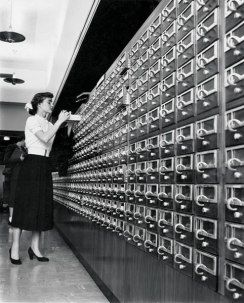The Obama administration just released its criteria for ranking institutions of higher education in this country. (For more information on the ratings system, click here.) The purpose of the system is to help prospective students and their parents find a college that provides a rewarding educational experience at a reasonable price. This system also provides a high-profile alternative to the U.S. News & World Report rankings, which generally value a school’s “prestige” (i.e., test scores of incoming students and amount of alumni giving) over affordability. In the interest of promoting libraries as being a key part of a student’s college experience, should there be a rankings system for them, also?
To some extent, there is an “unofficial” ratings system based on the size of the collection. Harvard University currently has the largest collection, although the University of Illinois at Urbana-Champaign’s library was the largest for many years. But does the sheer number of volumes really measure how valuable a library’s collection is to the users at a particular institution? Large research universities would be expected to have bigger collections, since they serve a larger body of students, faculty, and researchers. The size of the collection doesn’t take into account the number of items available per student at an institution (the higher, the better) or the number of items available per librarian (the lower, the better). Size alone also doesn’t cover the types of materials in a collection, including rare items not held by most other libraries, nor does it take into account collection strengths in particular areas. Additionally, a collection’s usefulness can be measured by the number of items available electronically, especially if a large number of students at the institution are in online programs.
That leads to another issue, however. Should libraries be judged solely by their collections? This goes back to the whole question of how one defines a library–is it merely a storage place for materials, or is it also a provider of services that help students and faculty succeed with their research and other endeavors? Measuring service might be harder than determining the size or makeup of a library’s collection. The number of library instruction sessions given each semester (adjusted for the size of the student body) might be one place to start. Similarly, library cultural programming or other activities could be considered as a measure of a library’s value to not just students and faculty, but also users from the outside community.
Thinking along those lines, where would the Benedictine University Library fit into a rankings system? What strengths of the collection or services would elevate us in the list?

![jewish-holidays_450[1]](https://benulibrary.wordpress.com/wp-content/uploads/2014/12/jewish-holidays_4501.png?w=240&h=300)






